Can Snails Jump? Debunking the Myths
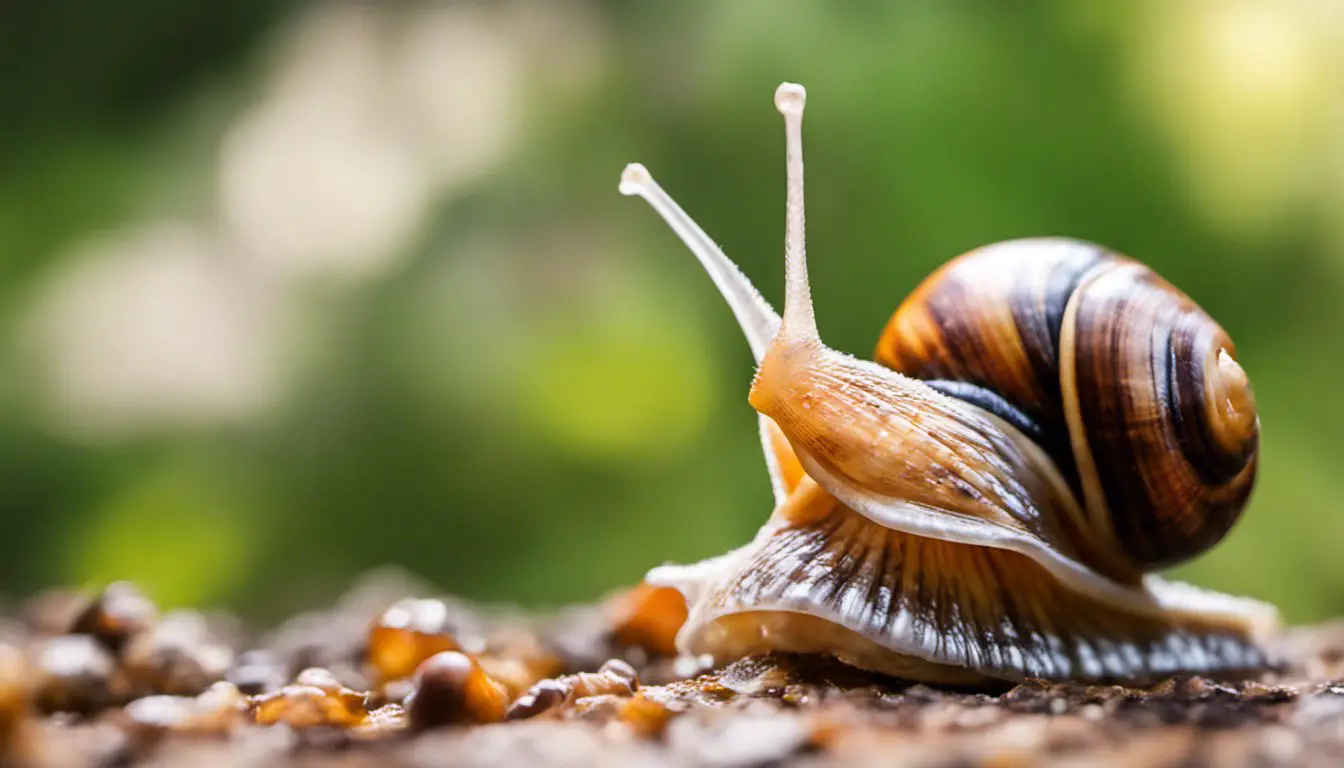
You may have heard that some animals, like frogs and kangaroos, are excellent jumpers, but have you ever wondered if snails can jump too? At first glance, this may seem like an absurd question. After all, snails are legless, slow-moving creatures, so the idea of them leaping into the air might be hard to imagine. However, the truth of the matter may surprise you.
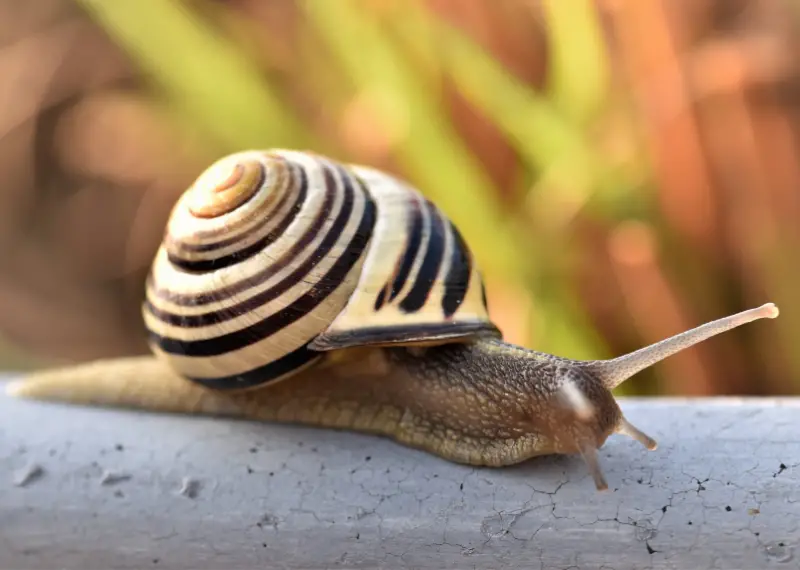
According to various sources, certain species of snails do possess the ability to jump. These little creatures achieve this fascinating feat as they vigorously move their tails from side to side, allowing them to twitch with enough power almost to appear like they are jumping.
Although this behavior may not immediately resemble the leaps of other animals, it demonstrates the unique and diverse abilities in the animal kingdom.
As you continue to explore the captivating world of snails, you’ll likely discover many more intriguing facts about these humble creatures. Unearthing the extraordinary abilities and characteristics of even the most unassuming animals can lead to a greater understanding and appreciation for the marvels of nature.
Contents
Table of Contents
Can Snails Jump?
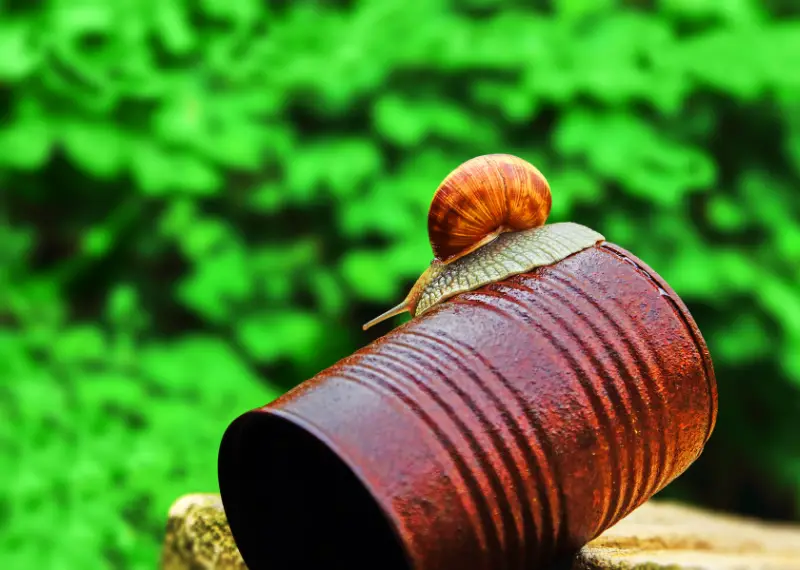
You might wonder if snails can jump, considering they lack legs. Surprisingly, despite their legless nature, some species of snails can jump. They achieve this feat by using their muscular feet to lift themselves off the ground to avoid predators 1.
Various species of snails have unique characteristics; among them, some can leap through a vigorous movement of their tails. These snails can twitch their tails from side to side with enough force to appear like they’re jumping 2.
Recent research and studies from James Cook University have provided valuable insight into snail behavior and locomotion. This knowledge helps us understand these fascinating creatures better and paints a clearer picture of their abilities, including their capacity for jumping 3.
So, when you encounter snails in your environment, be aware that their slow, slimy movements might not be their only way of getting around. These creatures have developed an impressive and somewhat unexpected method of avoiding danger, proving once again that nature is full of surprises.
The Physiology of Snails

The Muscular Foot
In snails, the muscular foot plays a crucial role in their locomotion. This strong, broad muscle contracts and extends to help them move forward. It’s interesting to know that this foot is unique to gastropods like snails and slugs. When you observe a snail’s movements, the muscular foot glides smoothly across surfaces, thanks to the secretion of mucus or slime that provides lubrication.
The Shell
A snail’s shell serves multiple purposes, primarily for protection and providing a safe space to retreat. These shells are mostly composed of calcium carbonate, which gives them the required strength and durability to withstand physical damage and weathering.
The shell’s patterns and colors can vary drastically among snail species, but their coiled structure remains a common feature in many. Incidentally, the shells also serve as a visual cue to determine the snails’ age.
The Mucus or Slime
The mucus or slime secreted by snails is another vital aspect of their physiology. This secretion assists in their locomotion by reducing friction, allowing them to glide smoothly across surfaces. The slime also serves as a protective barrier for their bodies, preventing dehydration and creating a moist environment that is conducive to their survival.
In certain situations, such as during dry periods or when predators threaten a snail, the mucus can harden and form a seal over the shell’s opening, thereby keeping the snail safe and secure inside.
Now that you have a better understanding of the physiology of snails, it’s important to recognize that although these creatures lack legs, some species of snails can jump. Despite their slow movements and simple anatomy, snails possess unique adaptations that enable them to survive in various environments, making them fascinating creatures to study.
Types of Snails and Their Behaviour
This section will discuss different species of snails and their unique behaviors. We will particularly focus on garden snails, humpback conch, Hemphillia, and semi-slugs.
Garden Snails
Garden snails are a type of land snail commonly found in your backyard or garden. They belong to the gastropod class, which has over 43,000 species of snails worldwide, including sea snails and freshwater snails ^(source). These slow-moving creatures mostly prefer moist environments and are known for their slimy trails.
Garden snails are usually herbivorous, feeding on plants and decomposing vegetation. When it comes to their behavior, they are mostly nocturnal and have a strong sense of smell, which they use to locate food.
Humpback Conch
The humpback conch, a type of sea snail, has a unique behavior compared to other snail species. These snails can be found in the Great Barrier Reef and are known to jump for their lives when they sense the presence of toxic predators like cone shells. They are capable of jumping their body height to avoid being preyed upon.
This adaptation is quite unusual for snails and demonstrates the diversity in snail behavior across various species.
Hemphillia and Semi-Slugs
Hemphillia and semi-slugs are another group of land snails with distinct behavior traits. While most snails have a protective shell, semi-slugs have a partially developed shell, making them vulnerable to predators. They have evolved unique defense mechanisms to adapt to this, such as retracting their bodies into the shell remnants or releasing a repelling mucus when threatened.
Regarding their behavior, these snails are also nocturnal and rely on their sense of smell to navigate their environment. Some species of Hemphillia have even been observed to jump by vigorously moving their tails from side to side, allowing them to leave the ground and evade danger briefly.
In conclusion, various species of snails, like garden snails, humpback conch, Hemphillia, and semi-slugs, exhibit diverse and fascinating behaviors. Their unique adaptations help them survive in their respective habitats and contribute to the gastropod world’s vast biodiversity.
Snails in Action: Movement and Jumping
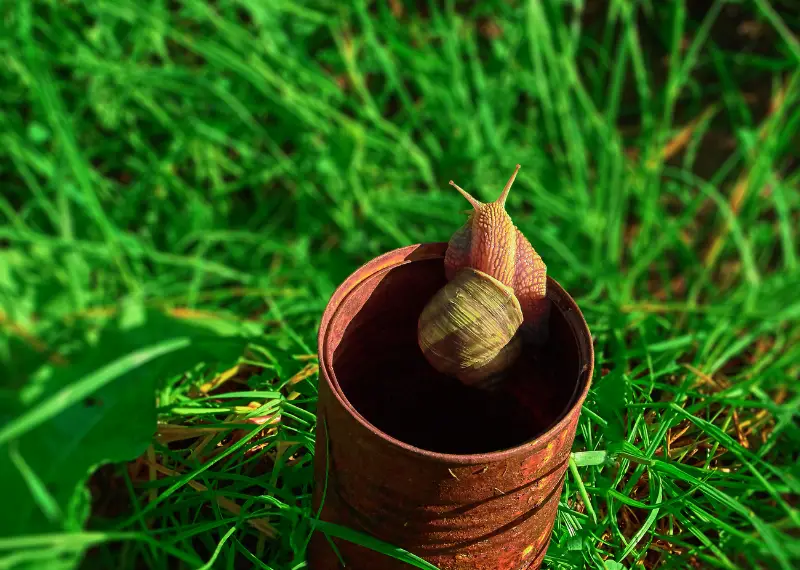
Leaping and Thrashing Movements
In general, snails move by extending their muscular foot and sliding across surfaces, often leaving a trail of mucus to aid in their movement. However, some species of snails exhibit a unique ability when it comes to jumping. They can perform leaping and thrashing movements to avoid danger or overcome obstacles.
Leaping: When snails leap or jump, they do so by vigorously moving their tails from side to side, like a whip motion. This propels their body off the ground and into the air briefly before they land back down.
Thrashing: Sometimes, snails exhibit thrashing movements as a defensive mechanism against predators. This involves rapidly extending and retracting their foot and twisting their body to evade potential threats.
The Twitch and Being Airborne
The Twitch: A key aspect of jumping in snails is their ability to twitch with enough force to launch themselves off the ground. This twitch results from their tail’s rapid movement, followed by their body’s propulsion into the air.
Being Airborne: Snails don’t possess the natural characteristics to remain airborne for extended periods, so their jumps are usually short-lived. Jumping aims primarily to escape danger or cross gaps in their environment.
In conclusion, while snails are not typically known for their jumping capabilities, certain species exhibit these unique movements. These leaping and thrashing movements, combined with the forceful twitch, allow snails to achieve brief moments of being airborne, surprising many with their seemingly impossible feats.
Snails and Their Environments
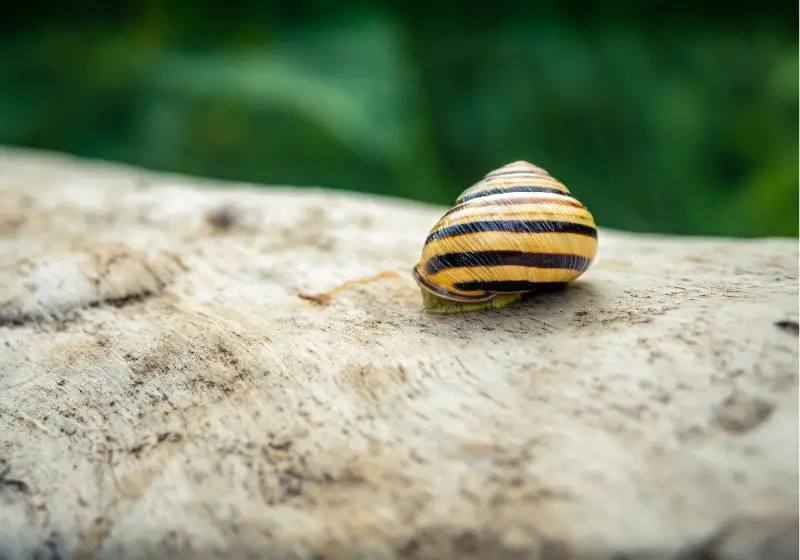
Ocean and Coral Reefs
Many snails inhabit coral reefs in the ocean, playing essential roles in ecosystem health. These snails help maintain balance in the reef by feeding on algae, preventing overgrowth that could suffocate coral structures. The humpback conch, a snail species, can even jump to escape predators by using its muscular feet. Such behavior contributes to their survival in a dynamic and challenging environment.
Coral reefs are vulnerable to climate change, as higher ocean temperatures can lead to coral bleaching and damage to the delicate ecosystems. This, in turn, impacts snail populations that depend on the reef for food and shelter.
Gardens
In gardens, you might encounter helpful and harmful snails to your plants. Snails like the common garden snail are often considered pests since they feed on various plants’ leaves, stems, and fruits. However, they also actively contribute to breaking down decaying organic matter and recycling nutrients in the soil.
To protect your garden from the overpopulation of snails, you can apply natural methods such as introducing predatory insects (like ground beetles), using traps, or improving garden maintenance practices like removing hiding spots and keeping the area dry.
Remember, the environments snails occupy, whether the ocean or your backyard garden, are impacted by climate change, predator interactions, and human activities. As a knowledgeable and environmentally conscious individual, you can take steps to understand and preserve these delicate ecosystems that support diverse species, including the fascinating world of snails.
Snail Facts You Probably Didn’t Expect: Watch this
Role of Snails in Ecosystems
As Food for Predators
Snails serve as an important source of food for various predators in ecosystems. They provide essential nutrients for mammals, birds, slow worms, earthworms, and insects, which depend on them for survival. As a result, snails play a crucial role in maintaining the balance among species within their habitats.
Since snails are a staple in the diets of many predators, their population can significantly impact the health of the ecosystem’s larger inhabitants. Maintaining a stable snail population is vital for the well-being of the entire ecosystem.
Aiding in the Nutrient Cycle
In addition to their role as prey, snails contribute to ecosystems’ nutrient cycle. As decomposers, they help break down dead and decaying vegetation, preventing the accumulation of waste materials that could spread diseases. This process is essential for maintaining healthy ecosystems regardless of whether the snails are found on land, in freshwater, or in the sea.
Many sea snails, for instance, feed on dead fish and fish feces, acting as natural cleaners and contributing to the overall health of their environment. Throughout their decomposition process, snails leave behind nutrient-rich feces, improving soil quality and encouraging plant growth.
As you can see, snails have a valuable place within their ecosystems, both as a food source for predators and as essential participants in nutrient cycling processes. By better understanding their environmental role, we can appreciate their importance and ensure they continue supporting our ecosystems’ balance and health.
Impact of Changing Conditions on Snails
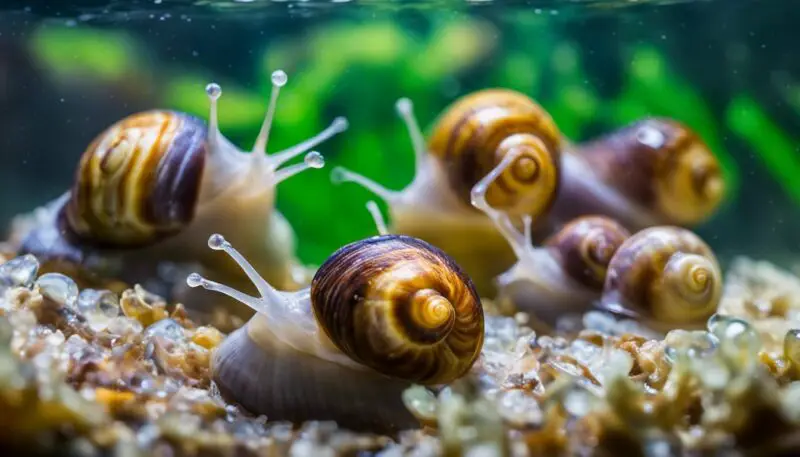
Effect of Carbon Dioxide and Climate Change
As climate change progresses, the increasing carbon dioxide levels directly impact the aquatic environments that snails inhabit. According to the New York Times, the humpback conch, a species of jumping snail, seems to be resistant to the negative effects of warmer and more acidic seawater. Your metabolism might be affected had you been in these conditions, but these snails show resilience.
Under these changing conditions, snails’ ability to jump contributes to their mobility and gives them a unique adaptive advantage. In a world where their habitat becomes increasingly challenging, this ability could prove to be their ultimate survival tool.
Adaptation and Mobility
The evolution of jumping snails demonstrates how necessary it is for species to adapt to their surroundings. Snail jumping might even have resulted from the need for increased mobility in various habitats. For example, the humpback conch can leap as high as its body height and is now popularly known as the ‘jumping snail.’
In other instances, snails have shown remarkable adaptations that help ensure their survival in the face of environmental changes. It has been observed that snails can survive being immersed in seawater for a short period, allowing them to raft between islands on logs and vegetation potentially.
In conclusion, as you can see, climate change and increasing carbon dioxide levels directly impact the snail population, forcing them to adapt and rely on their mobility, like jumping and other adaptive behaviors. It’s a fascinating example of evolution in action, demonstrating the strength and resilience of nature.
Summary: Can Snails Jump
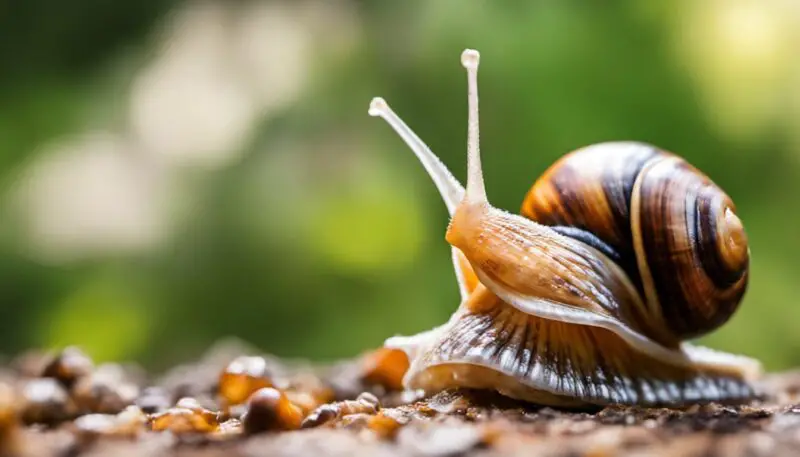
In this section, you’ll learn about the surprising ability of some snails to jump. While it’s commonly believed that snails cannot jump due to their lack of legs, certain species of snails possess the capacity to perform this feat.
You might be intrigued to know that some types of snails can jump by vigorously moving their tails from side to side. This movement generates enough force for the snails to appear as if they’re jumping. The evidence of snails jumping isn’t just a myth, as demonstrated by the fact that certain reef snails have been found to leap to escape from toxic predators, jumping at a height equivalent to their body length.
The discovery of snails jumping despite the challenges posed by their physical limitations adds to the fascinating qualities of these creatures. It demonstrates just how diverse and adaptable the many species of snails can be to survive and thrive in their environments.
It’s important to embrace this newfound knowledge with a confident and neutral perspective, understanding that there’s always more to learn about the natural world. With a clear and informative approach, you can now appreciate snails’ diverse abilities and characteristics, including their unexpected capacity for jumping.
Frequently Asked Questions
Can snails leap or hop?
Although it is a common belief that snails cannot jump due to their lack of legs, some species of snails are actually able to jump. They do this by moving their tails vigorously from side to side, allowing them to twitch with enough power almost to appear as if they’re jumping.
What is a snail’s jumping ability?
Snails’ jumping ability is limited and not as agile as other jumping animals. While a few species can perform a sort of jumping motion, it is not a primary method of movement in most snails. It is essential to remember that each species of snail has its own characteristics, and not all snails have the ability to jump.
Do snails have the capacity to jump?
Not all snails have the capacity to jump. For those that can, this ability is limited and less agile than the jumping abilities in other animals. Snails mainly rely on their muscular ventral foot for movement rather than jumping.
How do snails have adaptations for jumping?
Only a few species of snails have adapted for jumping by vigorously twitching their tails from side to side. Generally, snails do not rely on jumping as a primary method of movement; instead, they usually move using their ventral foot by contracting their muscles to create a waveform movement.
Are snails good at vertical movement?
Snails are not particularly good at vertical movement, especially when compared to other animals with jumping abilities. Most snails depend on their muscular ventral foot for moving across surfaces, which isn’t well-suited for significant vertical leaps.
What distinguishes snails from other animals that jump?
What mainly distinguishes snails from other jumping animals is their lack of legs and the limitations on their jumping abilities. While some snail species can perform a form of jumping, their movements are less agile and do not reach the same heights as other animals known for their jumping skills.

![How Big Do Assassin Snails Get? [Full Guide To Healthy Assassin Snails]](https://allourcreatures.com/wp-content/uploads/2021/11/assassin-snails-768x519.jpg)
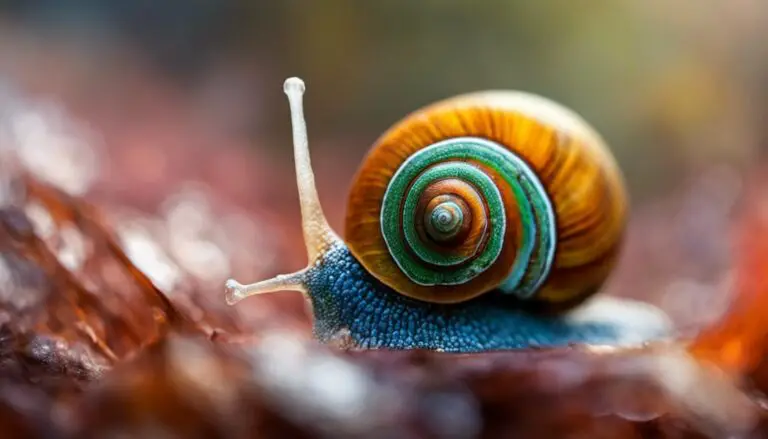
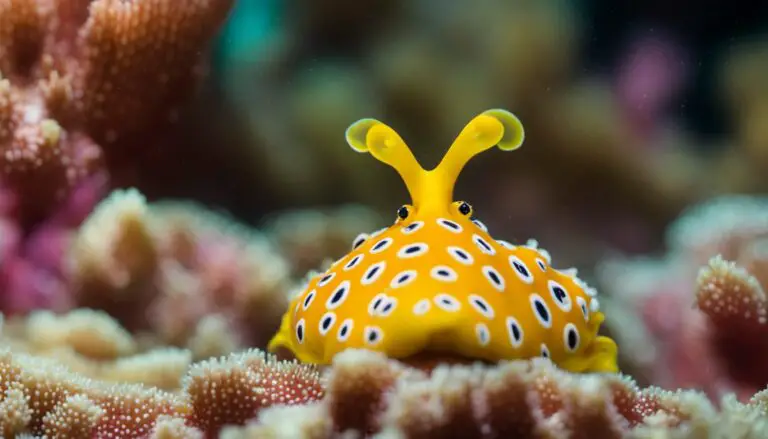

![Do Snails Change Shells? [Full Guide]](https://allourcreatures.com/wp-content/uploads/2021/11/snails-and-shell-768x511.jpg)
